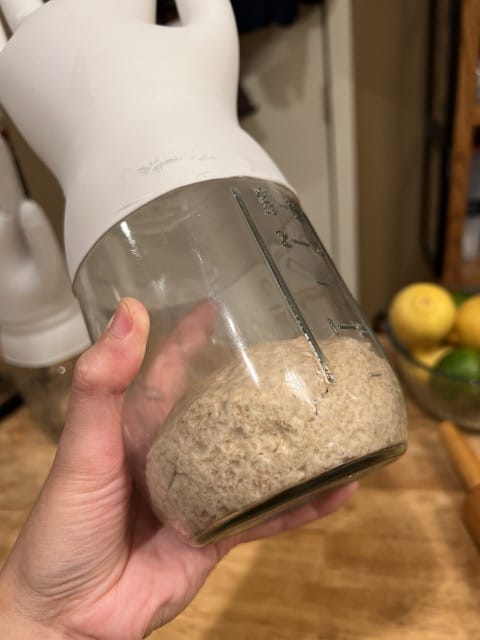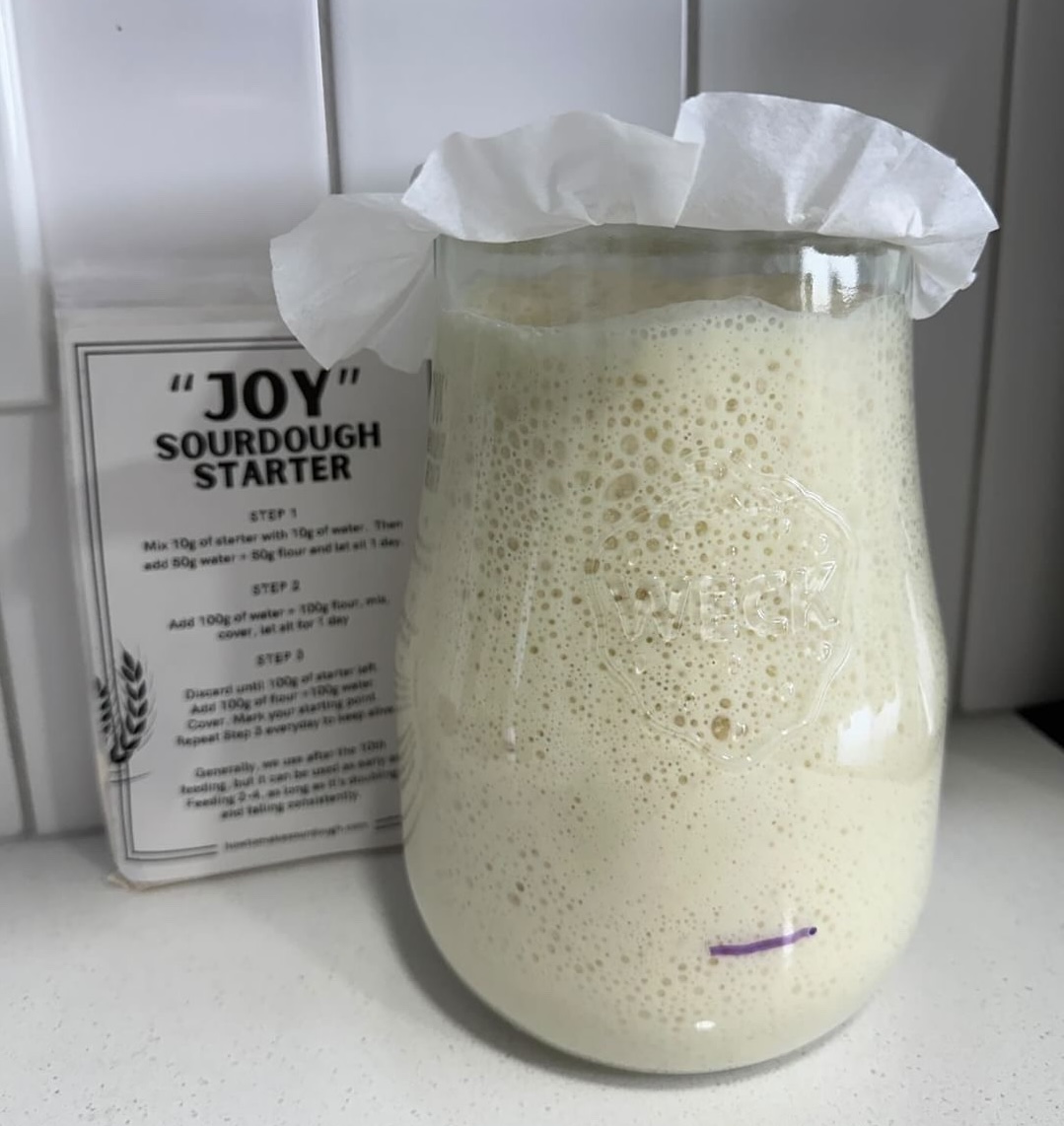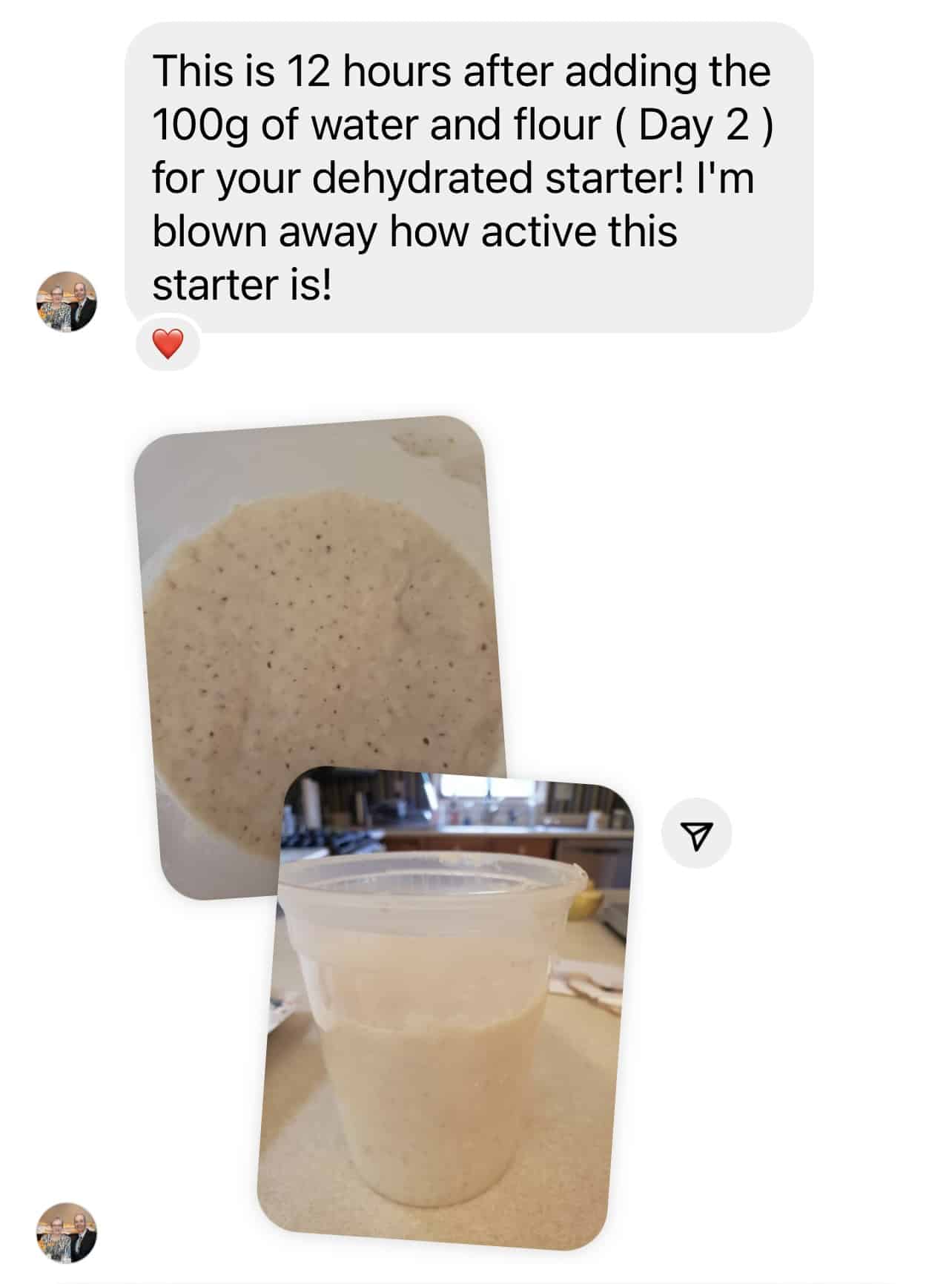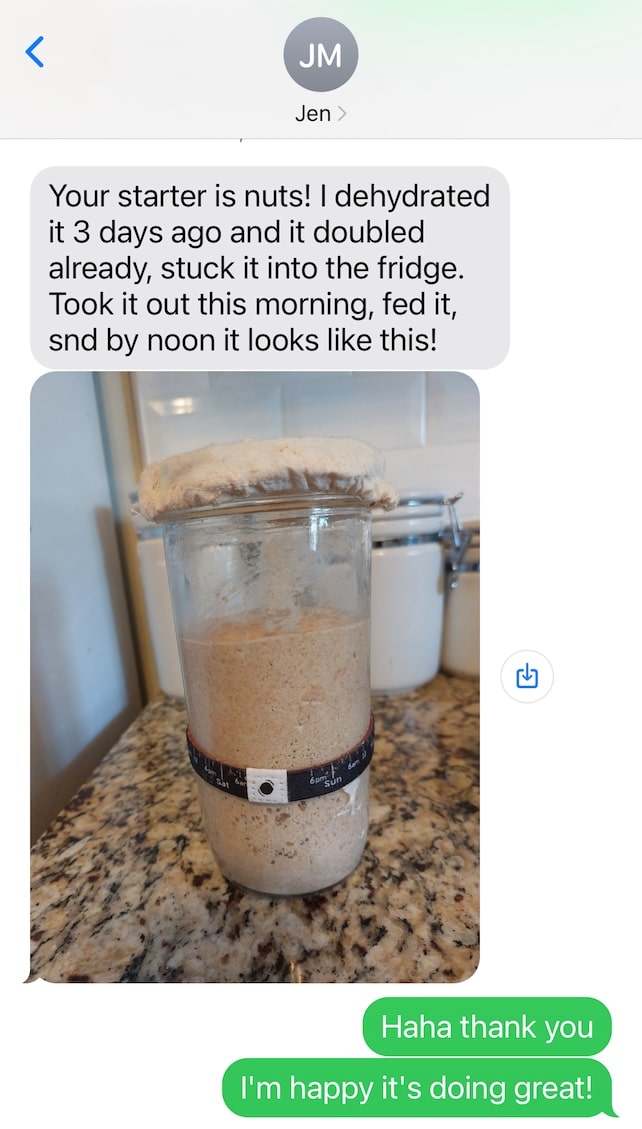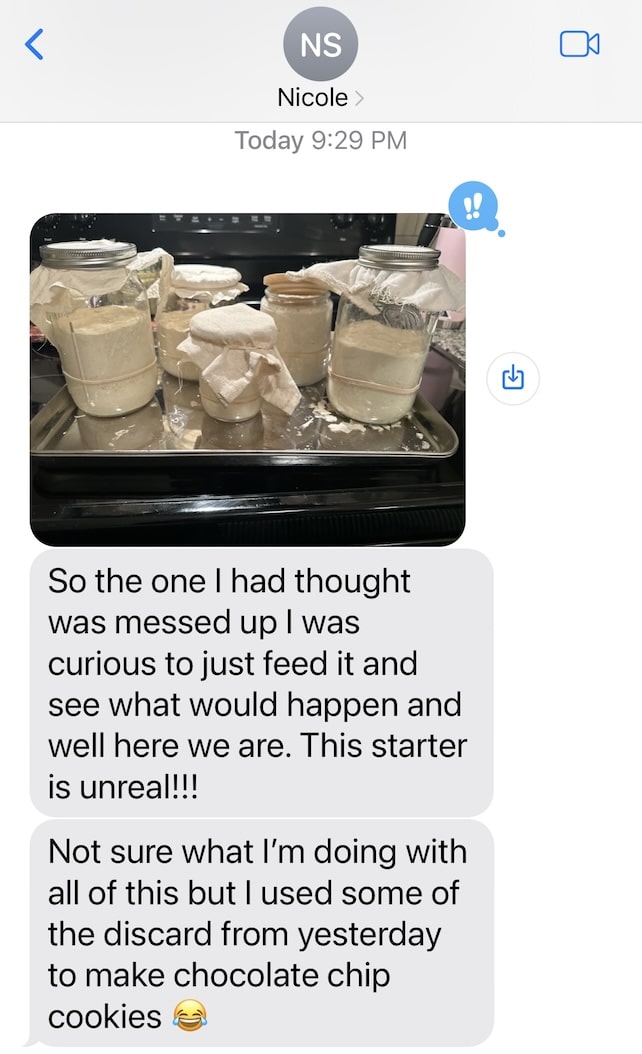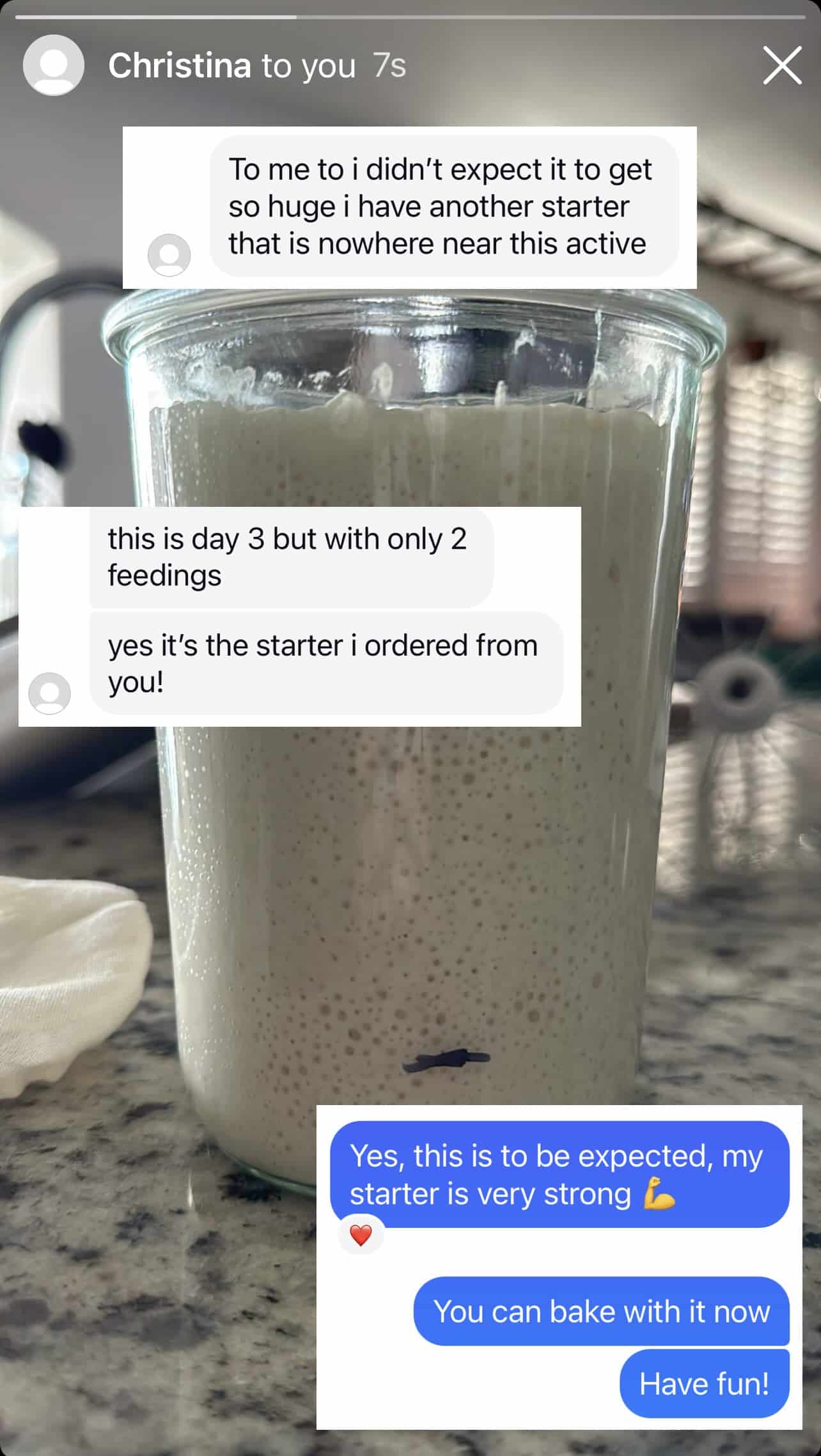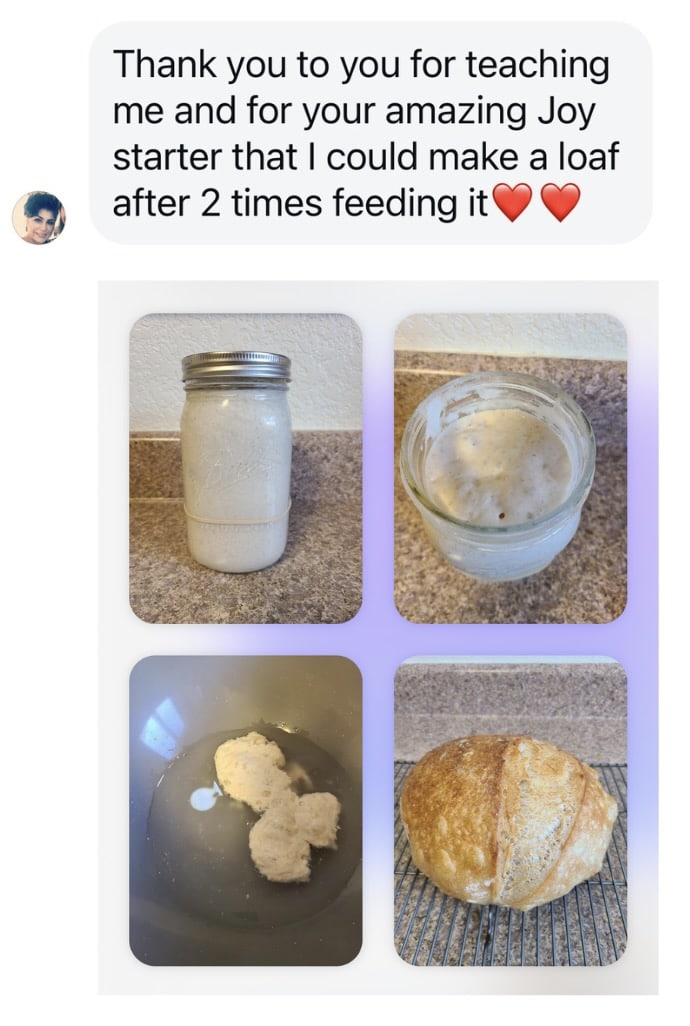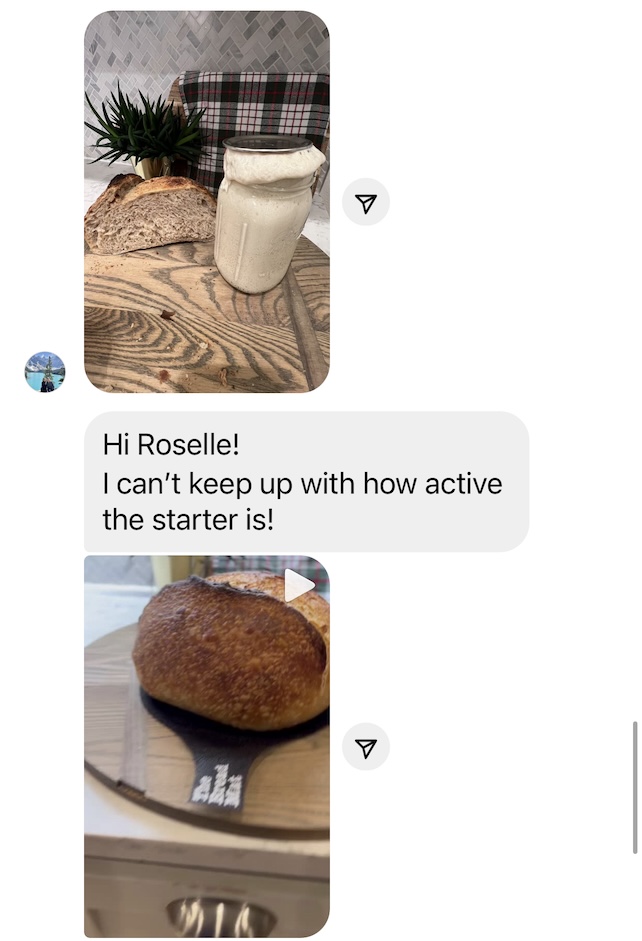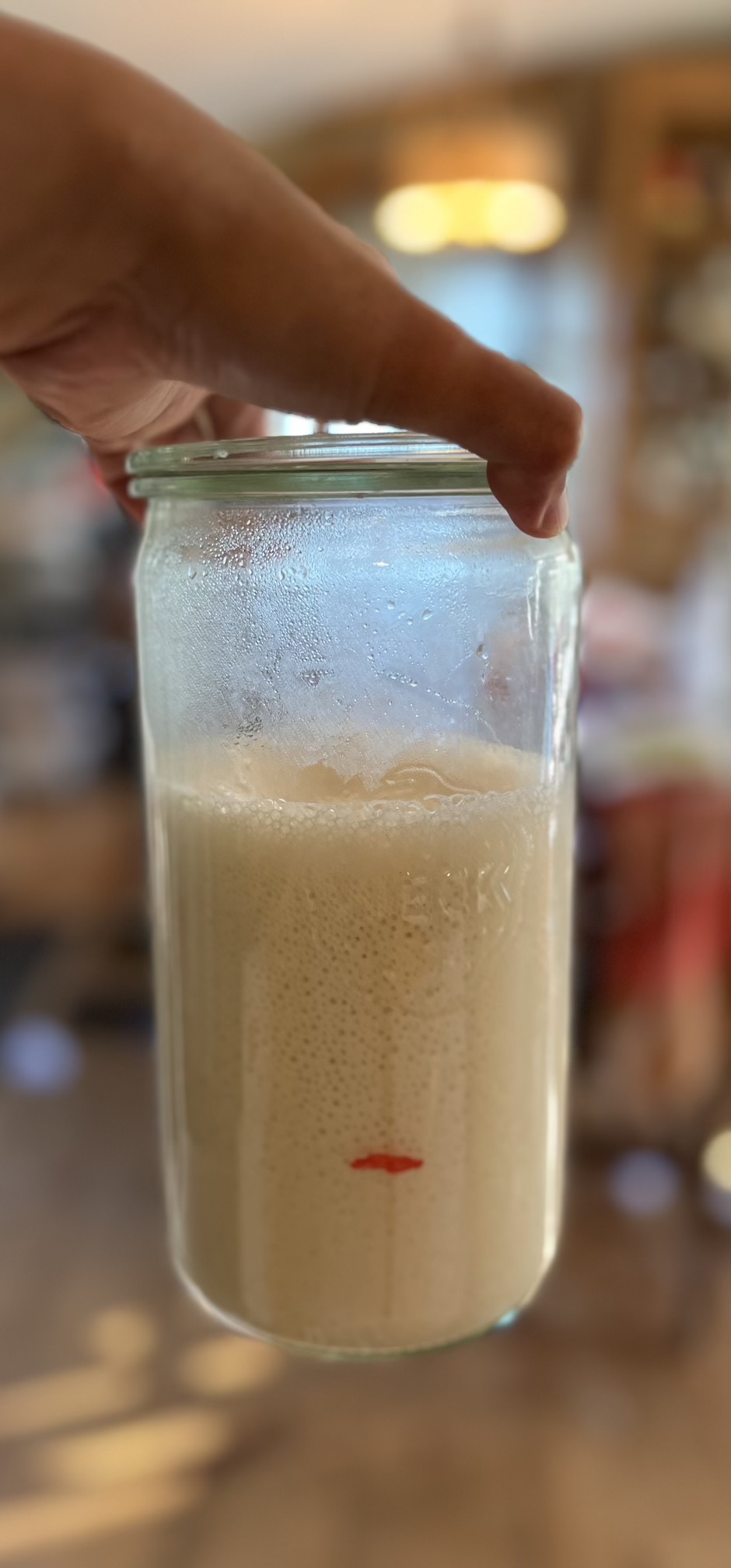Levain
Sourdough Starter VS. Levain
Sourdough Starter
AKA the mother –This is your base mixture of flour and water that you keep alive with regular feedings.
Levain
French word for leaven. Literal meaning? Sourdough starter.
So what’s the difference?
A levain is an offshoot or clone of your mother sourdough starter.
You take some of the mother sourdough starter. Put it in a new jar. Feed it and let it come to peak. Then use it to make a sourdough bread recipe.
All of the levain is used up in a sourdough recipe. None of the levain is meant to be fed and carried on like a mother starter does.
The only time you would feed a levain to carry it on is if your mother starter died and now you need to build a new mother starter.
Don’t let these confuse you
You might also see the term “levain bread” or “pain au levain,”
These are just other names for sourdough bread.
What is the point of making a levain?
I do not use levains personally. Instead, I use my mother starter whenever I need to bake sourdough. More on this later.
I really only use levains when the sourdough recipe requires me to.
So when would a levain be necessary?
When the sourdough recipe requires a completely different sourdough starter than your mother starter
Like this…
- When you’re making a sourdough recipe that calls for a stiff sweet starter, for example:
- Sourdough brioche
- Sourdough croissants
- Any sourdough bread you don’t want to be sour
- When you are making a sourdough recipe that’s 100% this type of flour, for example:
- 100% whole wheat sourdough
- 100% rye sourdough
- 100% einkorn sourdough
- Etc.
In these scenarios, to make these recipes truly 100% that recipe, you would make a levain that matches the flour of that sourdough recipe (if your sourdough starter wasn’t made with that flour already)
When your sourdough discard IS your mother sourdough starter
For example…
- You keep your mother sourdough starter in hibernating in the fridge,
- To make a levain, take a little of your cold mother sourdough starter, feed it (as per the sourdough recipe you are making) and use when it comes to peak
- You keep your sourdough discard in the fridge
- To make the levain, take a little of your sourdough discard, feed it (as per the sourdough recipe you are making) and use when it comes to peak
Important
In these scenarios, you will often see sourdough bakers recommending to feed at least 2x before using. This is especially true if the sourdough discard has been sitting in the fridge, unfed for a very long time.
Why?
Because
- Depending on when the starter was last fed, the sourdough starter/discard may be too weak to leaven anything, or
- The starter/discard may be too acidic –especially if the starter/discard you used had hooch on top –in this case, you’re going to want to discard heavily and feed at least at a 1:5:5 to restore the starter into a more palatable flavor profile
Other people may argue that you would use a levain to:
Scale up your sourdough starter
Like in this scenario:
Let’s say you only maintain a small amount of sourdough starter in a small jar. And the sourdough recipe you want to make requires more starter than you have in that small jar. You can use a levain to scale up the starter specifically for that recipe.
Sure…but you can also use your mother starter to do this, and actually, it’s way easier to use your mother starter to scale up starter to use in recipes.
This is what I do, and prefer to do.
This way, you
- eliminate the levain step (and the extra feedings that comes with it and extra dishwashing) and
- you are refreshing your mother sourdough starter every time you need to bake
How to use the mother sourdough starter instead of Levains
Now remember when I said I personally do not use levains? I just use my mother starter whenever I need to bake sourdough.
Here’s how I do that
No Discard method
(Using the mother starter, instead of making levains)
I like this method because it’s less dishes to wash.
Let’s say your recipe calls for 100g of starter.
And let’s say that you keep a small mother starter, around 50g total.
Simply feed your starter at a 1 : 1 : 1 ratio.
That looks like this:
| starter | flour | water | total | |
| Feeding Ratio | 1 | 1 | 1 | |
| Feeding 1 | 50g | 50g | 50g | 150g |
You take your original starter (50g), and add 50g of flour and 50g of water. Equal parts starter, flour, and water. 1 : 1 : 1
After this, you should have 150g of new starter in your jar.
When you starters comes to peak, take 100g of the starter and use that for your recipe.
What you have left in your jar is now 50g of starter, what you started out with.
To find out more about the no-discard method, read this post where I explain it a little further:


